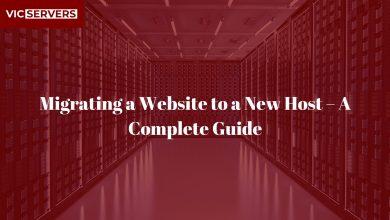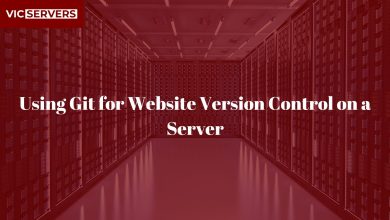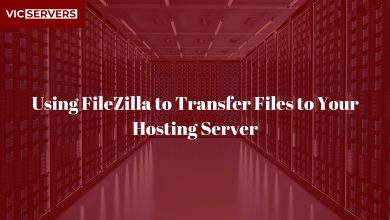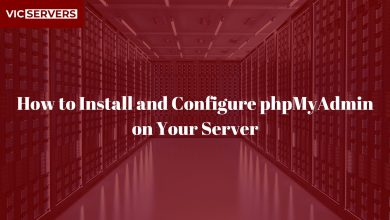How to Deploy a WordPress Site from Localhost to Server
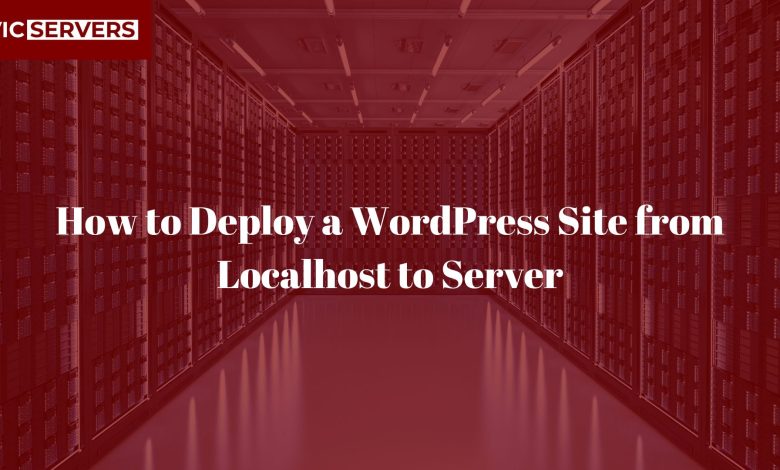
How to Deploy a WordPress Site from Localhost to Server
Creating your WordPress website on a local machine (localhost) is a smart and safe way to design, develop, and test before it goes live. But once everything looks good, the next big step is deployment — moving your WordPress site from localhost to a live server so the world can access it.
In this guide, we’ll walk you through how to deploy a WordPress site from your local development environment (like XAMPP, WAMP, or LocalWP) to a live server using Vicservers’ hosting services.
What You’ll Need:
- A working WordPress site on localhost
- A domain name (e.g. yoursite.com)
- A hosting plan (Vicservers offers reliable and affordable plans)
- Access to cPanel or FTP
- A database management tool (phpMyAdmin is common)
Step 1: Export the WordPress Files from Localhost
The first step is to collect all your website files from the local environment.
✅ If you’re using XAMPP/WAMP:
- Navigate to the
htdocsfolder:- Windows:
C:\xampp\htdocs\yourprojectfolder
- Windows:
- Zip the entire WordPress folder.
- This zip file includes:
- All themes and plugins
- The
wp-contentfolder - WordPress core files
Step 2: Export the Database
Your website’s content, settings, and configurations are stored in the database.
To export your local database:
- Open
http://localhost/phpmyadmin - Select your WordPress database.
- Click Export > choose Quick and format SQL.
- Click Go to download the
.sqlfile.
Step 3: Upload WordPress Files to the Server
Now, let’s move your zipped WordPress site to the live hosting environment.
Option 1: Upload via cPanel File Manager
- Login to your VicServers cPanel
- Go to File Manager > public_html (or a subdirectory)
- Click Upload, and upload the zipped site folder
- Once uploaded, Extract it within public_html
- Ensure all extracted files (like
wp-config.php,wp-content) are directly under public_html
Option 2: Upload via FTP (FileZilla)
- Connect to your server using FTP credentials
- Navigate to
/public_html/ - Upload all files from your local WordPress directory
Step 4: Create a New Database on Your Server
- In cPanel, go to MySQL® Databases
- Create a new database (e.g.
wp_live_db) - Create a new MySQL user and assign it to the database
- Note the:
- Database name
- Database user
- Password
Step 5: Import the Local Database to the Server
- Go to phpMyAdmin in cPanel
- Select the new database you created
- Click Import
- Upload the
.sqlfile you exported earlier from localhost - Click Go
If the import is successful, your database structure and content are now on the live server.
Step 6: Update wp-config.php File
Edit the wp-config.php file on your server to connect WordPress to the new database.
define('DB_NAME', 'your_new_db_name');
define('DB_USER', 'your_db_user');
define('DB_PASSWORD', 'your_password');
define('DB_HOST', 'localhost');
Save and close the file.
Step 7: Fix URLs in the Database
Your local site might have used http://localhost/sitename, but your live site will use something like https://yourdomain.com. You need to update all the URLs in the database.
Option 1: Use a Plugin (easiest)
- Install Better Search Replace or WP Migrate Lite
- Search for:
http://localhost/sitename - Replace with:
https://yourdomain.com - Run the replacement on the entire database (make a backup first!)
Option 2: Use SQL Query (advanced)
In phpMyAdmin, run:
UPDATE wp_options SET option_value = replace(option_value, 'http://localhost/sitename', 'https://yourdomain.com') WHERE option_name = 'home' OR option_name = 'siteurl';
UPDATE wp_posts SET guid = replace(guid, 'http://localhost/sitename','https://yourdomain.com');
UPDATE wp_posts SET post_content = replace(post_content, 'http://localhost/sitename', 'https://yourdomain.com');
UPDATE wp_postmeta SET meta_value = replace(meta_value,'http://localhost/sitename','https://yourdomain.com');
Step 8: Clean Up & Test
What to check:
- Homepage loads correctly
- All menus, images, and links work
- Contact forms, logins, and plugins are functional
- Make sure permalinks work. If not:
- Login to WordPress Admin
- Go to Settings > Permalinks
- Click Save Changes to flush rewrite rules
Step 9: Secure Your Site
Now that your site is live, security becomes crucial.
At Vicservers, you already get:
- Free SSL certificates
- Malware scans
- DDoS protection
- Regular backups
You should also:
- Use strong admin passwords
- Install security plugins like Wordfence
- Enable 2FA for admin accounts
- Keep themes/plugins updated
Optional: Set Up Email, Cron Jobs, and More
- Create custom email addresses (e.g. info@yourdomain.com) via cPanel
- Use cron jobs for scheduled tasks like backups
- Set up caching or install a CDN for performance
✅ Recap: Localhost to Live in 9 Steps
| Step | Description |
|---|---|
| 1 | Export site files |
| 2 | Export local database |
| 3 | Upload files to server |
| 4 | Create new database |
| 5 | Import the SQL file |
| 6 | Edit wp-config.php |
| 7 | Replace URLs |
| 8 | Test everything |
| 9 | Secure the live site |
Final Thoughts
Deploying a WordPress site from localhost to server may seem intimidating at first, but with the right steps, it’s straightforward and rewarding. Vicservers provides all the tools and support you need — from cPanel to 24/7 technical assistance — so you can launch with confidence.
Need Hosting for Your WordPress Site?
✅ SSD-Powered Hosting
✅ Free SSL & Domain (on selected plans)
✅ One-Click WordPress Install
✅ Daily Backups
✅ Support from real people — not bots
Your step-by-step guide to taking your WordPress website live with Vicservers
